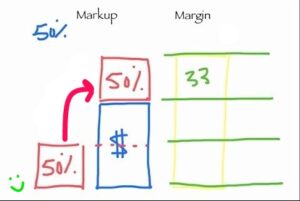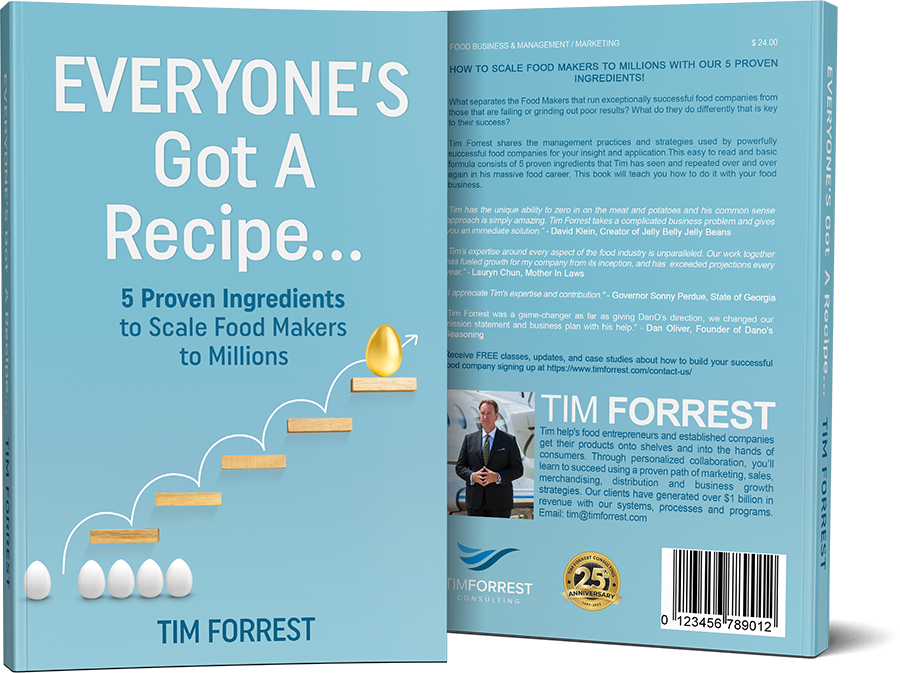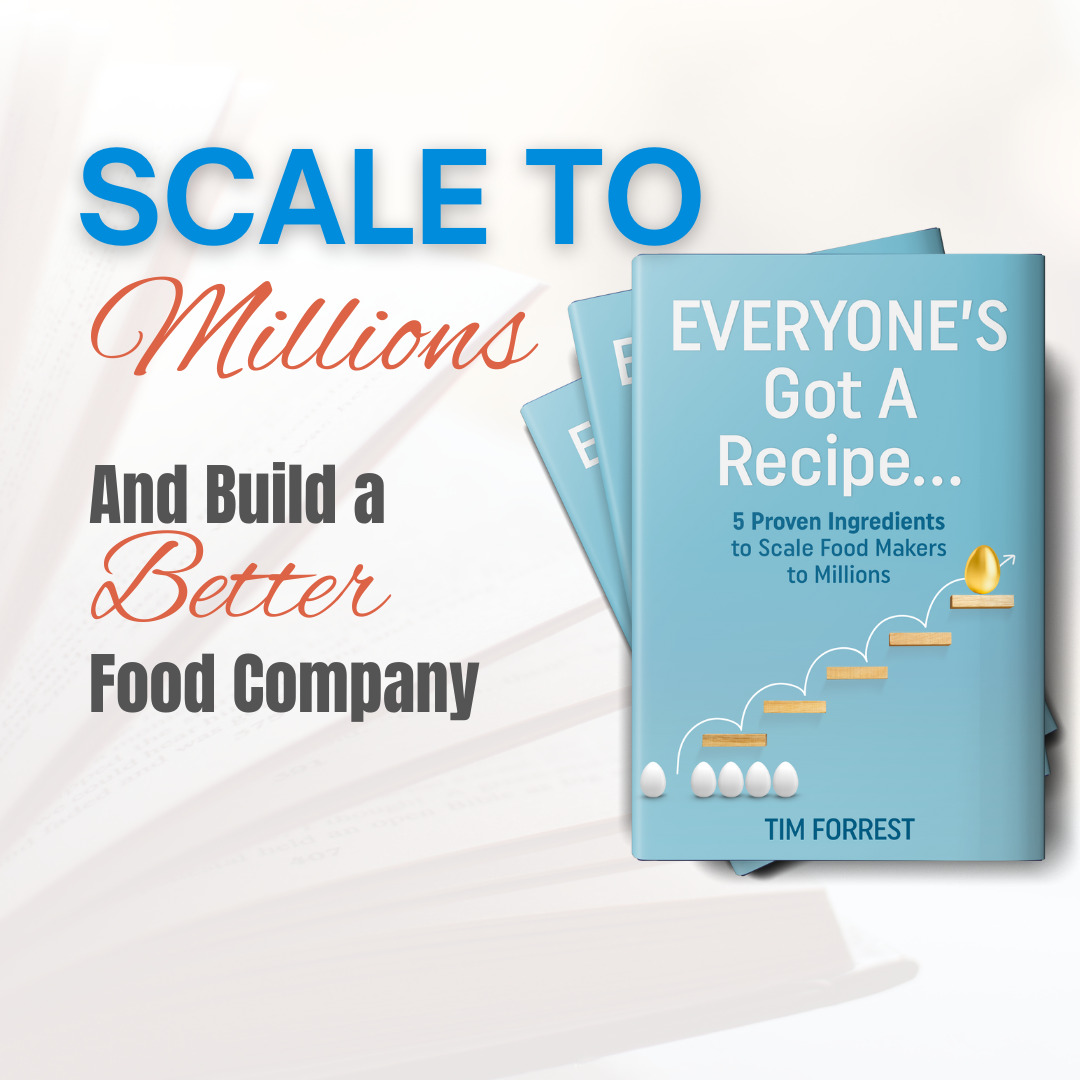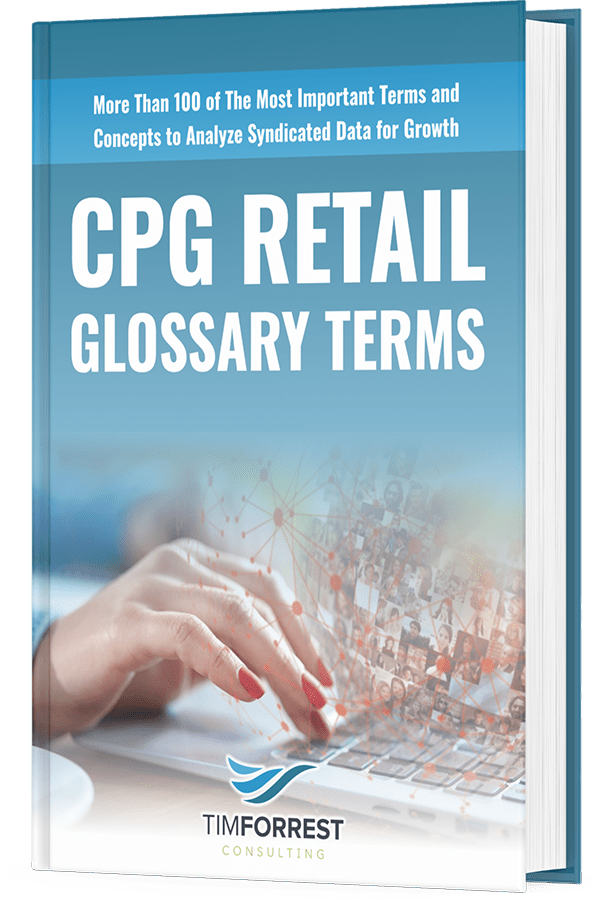The Profit Recipe: How Markup and Margin Shape Your Food Business
By Tim Forrest, Transforming Food Brands with Over $20M Raised and Nearly $1B in Growth
Are you leaving money on the table with your food business? Understanding the difference between markup and margin could be the game-changer you’ve been missing. These two financial metrics may seem interchangeable, but they serve distinct roles in shaping your pricing strategy and, ultimately, your profits. Dive in to discover how mastering these numbers can transform your food business in the competitive U.S. market.
Markup: Setting the Retail Price
Markup is the percentage added to the cost of a product to determine its selling price. It’s like the “extra” you add on top of the wholesale cost to cover your expenses and make a profit.
Example 1:
Let’s say you buy a specialty pasta sauce for $1.00 per jar from a supplier. You decide to add a 50% markup to set your retail price.
- Markup Percentage = 50%
- Retail Price = Wholesale Cost + (Wholesale Cost x Markup Percentage)
- Retail Price = $1.00 + ($1.00 x 0.50) = $1.50
In this example, the markup amount is $0.50, and the retail price becomes $1.50.
Margin: Understanding Your Profit
Margin, on the other hand, is the percentage of the retail price that is profit. It’s what you actually “take home” after a sale.
Example 1 Continued:
You sold the specialty pasta sauce for $1.50, and it cost you $1.00.
- Gross Profit = Retail Price – Cost = $1.50 – $1.00 = $0.50
- Margin Percentage = (Gross Profit / Retail Price) x 100
- Margin Percentage = ($0.50 / $1.50) x 100 = 33.33%
Here, the gross profit or margin is $0.50, and the margin percentage is approximately 33%.
Another Example: Organic Snack Bars
Example 2:
You buy organic snack bars for $2.00 each and decide on an 80% markup.
- Markup Percentage = 80%
- Retail Price = $2.00 + ($2.00 x 0.80) = $3.60
You sell the snack bars for $3.60.
- Gross Profit = $3.60 – $2.00 = $1.60
- Margin Percentage = ($1.60 / $3.60) x 100 = 44.44%
In this example, the markup amount is $1.60, the retail price is $3.60, and the margin percentage is approximately 44%.
Key Takeaways
- Markup is used to set the retail price and is calculated based on the cost of the item.
- Margin is used to understand profit and is calculated based on the selling price.
Understanding both markup and margin is essential for food businesses to price products effectively, especially in the competitive U.S. market where consumer preferences are constantly evolving. Now that we have a basic understanding of markup and margin, lets discuss how it plays out when selling our CPG products to distributors that service our retailers.
The Supplier’s Perspective: Selling to a Distributor
Suppose you manufacture specialty pasta that you sell at a wholesale price of $2.00 per package. A distributor is interested in your product and wants to add a 40% markup before selling it to retailers.
Calculating the Distributor’s Selling Price
To find the price at which the distributor will sell your pasta to retailers, you can use the following formula:
- Markup Percentage (Distributor) = 40%
- Retail Price to Retailer = Wholesale Cost + (Wholesale Cost x Markup Percentage)
- Retail Price to Retailer = $2.00 + ($2.00 x 0.40) = $2.80
The distributor will sell your pasta to retailers for $2.80 per package.
Key Takeaways for Suppliers in the Food Business
- Understanding Distributor Markup: As a supplier, it’s crucial to understand that the distributor will mark up your product to make their own profit. In this example, a 40% markup led to a retail price of $2.80 for retailers.
- Pricing Strategy: Your wholesale price needs to be competitive enough for distributors to add their markup while still offering a retail price that is attractive to consumers. This is particularly important in the U.S. market, where consumer preferences for specialty and health-conscious products are strong.
- Profitability: Knowing the distributor’s markup can help you better understand the supply chain and how your product’s price evolves from wholesale to retail. This can inform your own pricing strategies and negotiations with distributors.
- Alignment with Retailers: While you may not control the retailer’s pricing strategy, understanding the markup from the distributor can give you insights into the potential retail price and margins. This can be valuable for promotional strategies and brand positioning.
By understanding the distributor’s markup, you can better align your pricing and product offering to meet the needs of both distributors and retailers. This is especially vital in the competitive U.S. food market, where effective pricing can be a significant differentiator for your brand.
The Retailer’s Perspective: Achieving a 50% Margin
Imagine you’re a retailer who buys specialty pasta from the earlier discussed distributor for $2.80 per package. You aim to achieve a 50% margin on this product.
Calculating the Retail Price to Consumer
To find the price at which you should sell the pasta to consumers to achieve a 50% margin, you can use the following formula:
- Desired Margin Percentage (Retailer) = 50%
- Retail Price to Consumer = Cost to Retailer / (1 – Desired Margin Percentage)
- Retail Price to Consumer = $2.80 / (1 – 0.50) = $2.80 / 0.50 = $5.60
To achieve a 50% margin, you would need to sell the pasta at $5.60 per package.
Calculating the Gross Profit and Margin Percentage
- Gross Profit for Retailer = Retail Price to Consumer – Cost to Retailer
- Gross Profit for Retailer = $5.60 – $2.80 = $2.80
- Margin Percentage for Retailer = (Gross Profit / Retail Price to Consumer) x 100
- Margin Percentage for Retailer = ($2.80 / $5.60) x 100 = 50%
Key Takeaways for understanding Retail Pricing in the Food Business
- Setting Prices for Margin: As a retailer, their focus is on achieving a specific margin to determine their selling price to consumers. In this example, aiming for a 50% margin led to a consumer retail price of $5.60 for the specialty pasta.
- Profitability and Competitive Pricing: Achieving your target margin ensures that you cover costs and make a profit, while still offering a competitive price. This is especially important in the U.S. food market, where consumers are increasingly looking for specialty and health-conscious options.
By understanding how distributor markups and retailer margins work together, you can better navigate the complexities of pricing, particularly in the competitive U.S. market. This knowledge is crucial for setting prices that are both profitable for your business and attractive to consumers.
Mastering the nuances of markup and margin can be the difference between a thriving food business and one that’s merely surviving. In the competitive U.S. market, understanding these financial metrics is not just an option; it’s a necessity. If you’re ready to elevate your food business to the next level, let’s talk strategy.
- Book a Consultation: Unlock the full potential of your food brand with tailored strategies that have helped our clients raise over $20M and achieve $1B in growth. Book your consultation here.
- Subscribe to Our Newsletter: Stay ahead of the curve with the latest trends, insights, and innovative strategies in the food business. Subscribe now.
- Read ‘EVERYONE’S Got a Recipe’: For more in-depth strategies and insights, grab a copy of my book to revolutionize your approach to the food business. Order your copy here.
Don’t leave money on the table. Transform your food brand today.
 “Hi I’m Tim, and I love the food business! I’ve been helping large and small companies and entrepreneurs achieve success for decades. My consulting projects have contributed to major successes for my clients, including many with 100%+ year-over-year growth rates. I enjoy sharing my expertise, and hope you find these blog posts enlightening. Please reach out to me with any questions or comments.”
“Hi I’m Tim, and I love the food business! I’ve been helping large and small companies and entrepreneurs achieve success for decades. My consulting projects have contributed to major successes for my clients, including many with 100%+ year-over-year growth rates. I enjoy sharing my expertise, and hope you find these blog posts enlightening. Please reach out to me with any questions or comments.”



















 We help food entrepreneurs and established companies get their products onto shelves and into the hands of consumers. Through personalized collaboration, you’ll learn to succeed using a proven path of marketing, sales, merchandising, distribution and business growth strategies. We’ve generated over $1 billion in revenue and company valuations for our clients. Let us put our expertise to work for you.
We help food entrepreneurs and established companies get their products onto shelves and into the hands of consumers. Through personalized collaboration, you’ll learn to succeed using a proven path of marketing, sales, merchandising, distribution and business growth strategies. We’ve generated over $1 billion in revenue and company valuations for our clients. Let us put our expertise to work for you.





